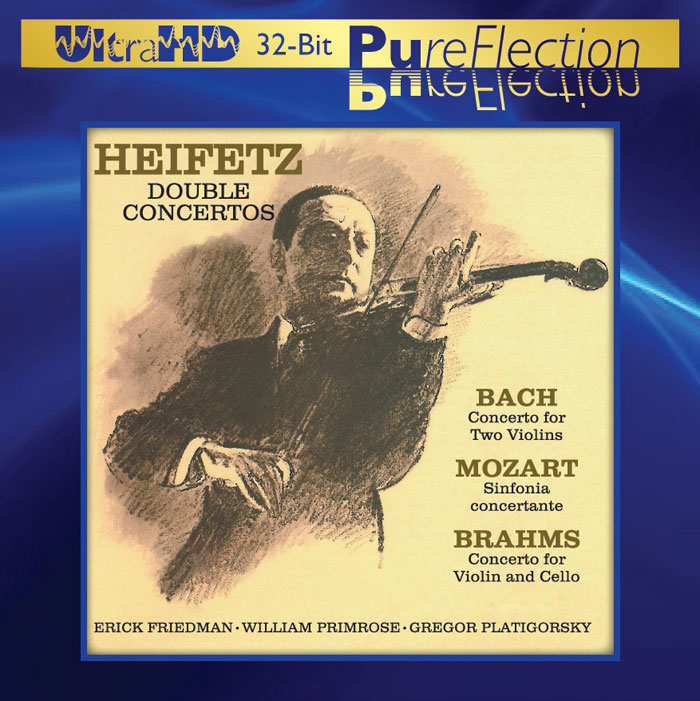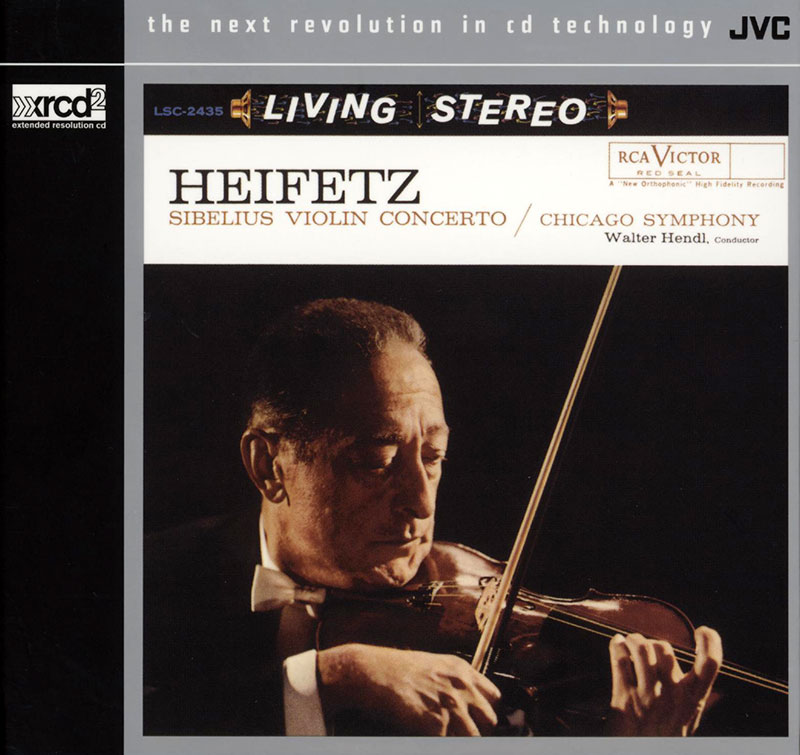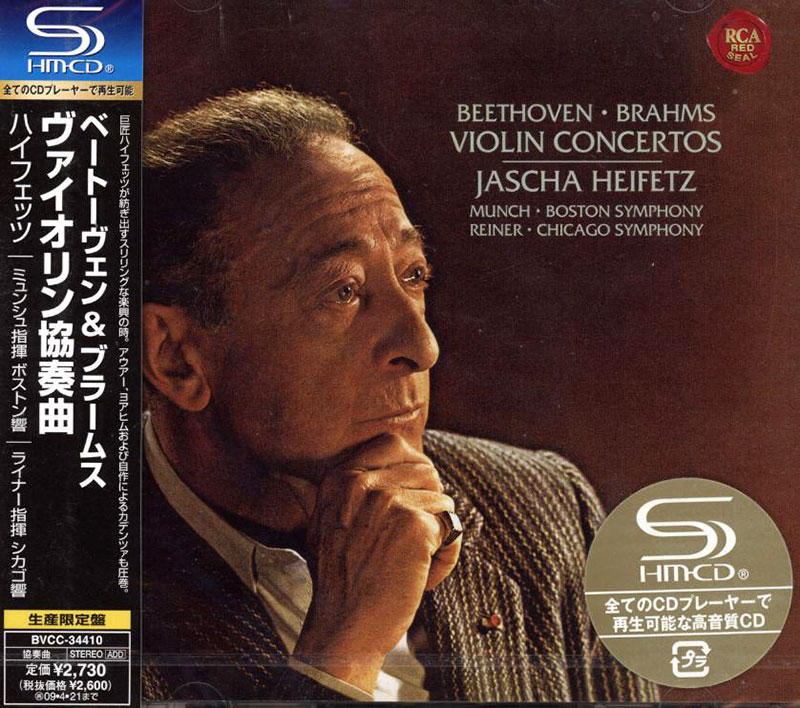Logowanie
KOLEKCJE!
BACH, CHOPIN, LISZT, MOZART, GRIEG, Dinu Lipatti, Otto Ackermann, Ernest Ansermet
The Master Pianist
PROKOFIEV, CHOPIN, TCHAIKOVSKY, SCHUMANN, BEETHOVEN, Martha Argerich, Claudio Abbado, Giuseppe Sinopoli
The Concerto Recordings
The Collection 2
Jakość LABORATORYJNA!
ORFF, Gundula Janowitz, Gerhard Stolze, Dietrich-Fischer Dieskau, Deutsche Oper Berlin, Eugen Jochum
Carmina Burana
ESOTERIC - NUMER JEDEN W ŚWIECIE AUDIOFILII I MELOMANÓW - SACD HYBR
Winylowy niezbędnik
ClearAudio
Essence MC
kumulacja zoptymalizowana: najlepsze z najważniejszych i najważniejsze z najlepszych cech przetworników Clearaudio
Direct-To-Disc
PIAZZOLLA, ChamberJam Europe
Tangos del Ángel y del Diablo
Direct-to-Disc ( D2D ) - Numbered Limited Edition
BACH, MOZART, BRAHMS, Jascha Heifetz
Concerto in D Minor for Two Violins / Sinfonia concertante / Concerto in A Minor for Violin and Cello
- Jascha Heifetz - violin
- BACH
- BRAHMS
- MOZART
The Concerto for 2 Violins, Strings and Continuo in D Minor, BWV 1043, also known as the Double Violin Concerto or "Bach Double", is perhaps one of the most famous works by J. S. Bach and considered among the best examples of the work of the late Baroque period. Bach wrote it between 1717 and 1723 when he was the capellmeister at the court of Anhalt-Köthen, Germany. The concerto is characterized by the subtle yet expressive relationship between the violins throughout the work. The musical structure of this piece uses fugal imitation and much counterpoint.
The Sinfonia Concertante for Violin, Viola and Orchestra in E-flat major, K. 364 (320d), was written by Wolfgang Amadeus Mozart. At the time of its composition in 1779, Mozart was on a tour of Europe that included Mannheim and Paris. The composition's complex orchestral dynamics reflects the increasing technical competence of the European orchestra of that era and was strongly influenced by the Chevalier de Saint-George; whom he met while in Paris and whose Concerto for Violin and Orchestra Op. 5, No. 2 Mozart quoted in the final movement; as well as by Mozart's visit to the Mannheim court orchestra during his European tour of 1777 to 1779. Mozart had been experimenting with the sinfonia concertante genre and this work can be considered his most successful realization in this cross-over genre between symphony and concerto.
The Double Concerto in A minor, Op. 102, by Johannes Brahms is a concerto for violin, cello and orchestra. The Double Concerto was Brahms' final work for orchestra. It was composed in the summer of 1887, and first performed on 18 October of that year in the EDYCJA LIMITOWANA - NUMEROWANA - NAKŁAD TYLKO 1000 EGZEMPLARZY!
Gürzenich in Köln, Germany. Brahms approached the project with anxiety over writing for instruments that were not his own. He wrote it for the cellist Robert Hausmann, a frequent chamber music collaborator, and his old but estranged friend, the violinist Joseph Joachim. The concerto was, in part, a gesture of reconciliation towards Joachim, after their long friendship had ruptured following Joachim's divorce from his wife Amalie.(Brahms had sided with Amalie in the dispute.)
The concerto makes use of the musical motif A-E-F, a permutation of F-A-E, which stood for a personal motto of Joachim, Frei aber einsam ("free but lonely"). Thirty-four years earlier, Brahms had been involved in a collaborative work using the F-A-E motif in tribute to Joachim: the F-A-E Sonata of 1853.

>>> Płyta do odtworzenia w każdym typie czytnika CD i DVD. Technologia PureFlection, bazująca na sposobie produkcji glasmasterów nie dotychczasową, tradycyjną metodą przed odcisk, ale z wykorzystaniem procedury tworzenia matrycy Bluray, w niespotykanym dotychczas stopniu pozwala precyzyjnie odwzorować walory taśmy-matki. Do absolutnego minimum ograniczone zostały typowe dla dotychczasowych metod produkcji CD błędy (m.in. jitter). Zdaniem Winstona Ma - połączenie technlologii UltraHD i metody PurreReflection to obecnie najwyższy na świecie poziom produkcji płyt CD.<<<
A Better CD Production Process - The Pure Reflection (PureFlection) Process:
FIM UHD CDs now sound undeniably better than ever! FIM's first priority is to locate a factory that at offers the latest technologies throughout its entire production chain, from the best A-grade polycarbonate materials, to testing and accurate quality control tools. The factory must produce a detailed specification sheet which ensures the discs produced demonstrate the same quality as the original recording.
To assure us of the best results, FIM has enlisted the help of one of the most experienced mastering engineers in the industry to craft the glass disc for the final replication process. Winston Ma continually maintains close rapport with him, as well as the original recording engineers, the mastering engineers and the manufacturer to achieve consensus regarding musicality and the sound spectrum.
FIM's glass mastering-disc engineer maintains expertise in the latest technologies: he currently uses a special blu-ray recordable mastering thermal process technique to create small smooth grooves which result in precision fidelity. He is meticulous in ensuring the best track pitch and the distance between the spiral of the pits, to reduce the amount of noise the tracking servo in the drive picks up from adjacent tracks, thus ensuring the best parameters on Cross Talk (XT) by minimizing the servo noise of the Drive during playback of the replica results.
To further ensure the best quality, FIM stipulates the most extensive test specification requirements. Pure Reflection (PureFlection) discs show in every CD booklet the full spectrum of specification of a given CD in the following categories:
BLER (17 items)
BERL (9 items)
Physical (6 items)
Jitter (6 items)
E22 Graph and
BLER Graph
The concept of UHD 32-Bit PureFlection is the transformation of a superior sound into something truly exceptional, enhancing the experience without interfering in it. Sit back, relax and listen to the new sound of a UHD 32-Bit PureFlection CD!




























